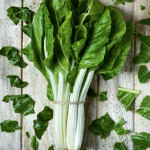Whether you’re a frequent or an occasional restaurant diner it’s nice to know a few inside tips on how to maximize your experience.
If you’re health conscious, don’t buy into claims that the food you order will meet your needs. Most restaurants don’t make food that’s healthy. They’re job is to make it taste good. Restaurants put so much butter on everything they serve. It’s difficult to find a healthy option today.
Always ask your server if there is anything on the menu you should steer away from. If your server say, “That would be the last thing I’d choose,” there is a good reason.
Rib eye is the best steak to order. It’s more flavorful and very tender. Don’t just say “medium rare.” Give your server a description of what the middle of the steak looks like – “all pink from edge to edge” or “I like it all red.” Everyone has a different idea of what the middle should be.
If you drink alcohol, the best bang for your buck is either beer or wine. Hard liquor is the most expensive, for what you’re getting.
“Work With What You Got!”
©Tiny New York Kitchen © 2018 All Rights Reserved
Olive oil is rich in unsaturated fat and is also an anti-inflammatory, but all olive oils aren’t created equally. As you may have heard, not all imported olive oil is 100% pure olive oil because it’s mixed with other types of oils. It’s important to know what type of olive oil you’re purchasing. To avoid spoilage make sure to store olive oil away from heat, air, and light. Here is a quick guide on selecting oil for all of your cooking needs.
EXTRA VIRGIN
Extra virgin olive oil comes from the olive’s first cold press. The highest quality unrefined oil available; EVOO has a pure, fruity flavor and is best used for drizzling on salads, vegetables, and proteins and dipping bread into.
ORGANIC
Organic olive oil is very similar to extra virgin in terms of how it’s made, the quality, and the flavor. The difference is that organic olive oil is made using only certified organic olives.
LIGHT
“Light” refers to flavor, not fat or calories. Light olive oil is a refined oil that has a high smoke point and neutral flavor, so it’s great for frying, sautéing, and baking.
PURE
If you need an all-purpose cooking oil, pure olive oil fits the bill. It’s a blend of virgin and refined oils, leaving it with a neutral taste.
“Work With What You Got!”
©Tiny New York Kitchen © 2018 All Rights Reserved
Here is another use for the whole grains and seeds that you’re seeing at the store. Top off with delicious flavoring, which are also tasty on oatmeal.
Amaranth (3/4 Cup)
Bring 2 1/4 cups water or milk to boil in saucepan. Stir in amaranth. Reduce heat to low, cover and simmer until tender. Cooking time is 25 to 30 minutes. Stir occasionally. Remove from heat and mix in or top with dried cherries, coconut sugar, macadamia nuts, vanilla, banana, or cacao nibs. Serves 2
Millet (3/4 Cup)
Bring 1 1/2 cups water or milk to boil in saucepan. Stir in millet. Reduce heat to low, cover and simmer until tender. Cooking time is 15 to 20 minutes. Stir occasionally. Remove from heat and mix in or top with chopped dates, demerara sugar, hazelnuts, cloves, clementine, or granola. Serves 2
Quinoa (3/4 Cup)
Bring 1 1/2 cups water or milk to boil in saucepan. Stir in quinoa. Reduce heat to low, cover and simmer until tender. Cooking time is 15 to 20 minutes. Stir occasionally. Remove from heat and mix in or top with dried apricots, agave syrup, pine nuts, cardamom, blueberries, or toasted coconut.
Serves 2
“Work With What You Got!”
©Tiny New York Kitchen © 2018 All Rights Reserved
Use The Leaves
The leafy green stems of beets or radishes make a tasty side dish when sautéed with garlic and olive oil. Try blending carrot greens with olive oil, Parmesan cheese, and a squeeze of lemon for a tasty pesto.
Slice The Stems
Broccoli stalks are the perfect size for spiralizing and make a crunchy addition to salads.
Zest The Rind
Citrus peels are packed with sweetness. Their flavorful zest will elevate any marinade, vinaigrette, or dessert.
Vegetable Stock
And, of course, you can make homemade vegetable stock.
“Work With What You Got!”
©Tiny New York Kitchen © 2018 All Rights Reserved
Going out for dinner on Valentine’s Day is a risky affair. Even the best restaurants can have “overload difficulties” on such a busy night where couples have expectations of restaurant perfection. A better way to manage expectations is to take control of them yourself. Food is a language of love. You know what you like and what your loved one likes. No need to worry about cheesy love songs or a perfumed soaked lady sitting next to you. Nothing says I love you more than taking the time to make a special meal for the person you love. Visit the local farmers’ market, butcher, or seafood shop to buy their favorite seasonal ingredients. Come up with a meal that celebrates love. Turn off the lights, fire up all the candles and put on your favorite music.
Keep it easy and made make it special. Plan out the meal from beginning to end to get organized and make sure you have a solid menu. If you’re not a seasoned cook make sure to keep it simple and I recommend not trying to make complicated dishes that you’ve never made before. Make it easy with three courses. Begin with a beautiful cheese plate. Embrace easy, big impact dishes. Start off with prosciutto-wrapped scallops finished with a squeeze of lemon. Warm things up with braised short ribs or steaks finished off with butter and herbs. Keep desserts simple, but sweet. Decorate bakery cakes with fresh fruit or edible flowers or warm up slices of pie and top with caramel sauce and a gourmet ice cream or try your hand at an easy dessert of chocolate pots de crème. Don’t forget that nice bottle of wine or champagne.
“Work With What You Got!”
©Tiny New York Kitchen © 2018 All Rights Reserved
The colder months are when a rainbow of fruits and vegetables reach their peak, from dark green kale to sunny citrus.
Jicama
Pronounced hee-cah-ma, this winter vegetable is crunchy and refreshing. Its mild flavor makes it perfect for salads, salsa, or as crudités for your favorite dip. Use a vegetable peeler to remove its tough skin. When chopping, pick the ones with taut skin and firm flesh.
Turnips
This phytonutrient-rich root vegetable becomes sweeter as you cook it, shedding any bitterness along the way. The greens are particularly good for you and make an easy side sautéed with some garlic in olive oil.
Beets
Putt off by the long cooking time for beets? Reach for conveniently precooked packages in the produce section, or enjoy them raw. Peel them and grate them into salads or smoothies.
Parsnips
Earthy, sweet parsnips are loaded with fiber and minerals like folate and potassium. Older parsnips can have a somewhat fibrous core, which you can cut out before cooking if you prefer a softer texture.
Red Cabbage
High In antioxidants, red cabbage is great for slaws, but unlock a whole new world of flavor by sautéing, roasting or even grilling it.
Citrus
This category of fruit is at its peak right now, so take full advantage. The beauty of citrus is that it can swing from sweet to savory. These fruits stay fresh for weeks in the fridge, so keep a variety on hand to brighten up breakfasts, lunches, and dinners. Lemons, limes, and grapefruit are easy-to-find mainstays, but don’t be afraid to experiment with blood oranges, key limes, Meyer lemons, kumquats, pomelos, and clementines.
Brussels Sprouts
Full of fiber and vitamins K and C, this once-maligned cruciferous vegetable (from the same family as cauliflower and cabbage) is way more versatile than you think. Try it raw, roasted, fried, steamed, or sautéed.
Kale
This leafy green has gone from tossed-aside garnish to hot trend to salad staple. Whether you choose the curly or lacinato type, kale is high in vitamins K, C, and A, as well as carotenoids like lutein to promote eye health.
“Work With What You Got!”
©Tiny New York Kitchen © 2018 All Rights Reserved
Kombucha (also known as tea mushroom or Manchurian mushroom) is a fermented, slightly sparkling black or green tea beverage that is usually lightly flavored with fruit, ginger, or herbs. Kombucha is commonly intended as a functional beverage for health benefits (although there is no real scientific evidence to support health benefit claims). Kombucha is produced by fermenting tea using a symbiotic culture of bacteria and yeast. Many people, myself included, drink kombucha as a source of probiotics, which is the “good bacteria” that are beneficial for digestion. Pregnant women and children under age 4 should not drink kombucha.
“Work With What You Got!”
©Tiny New York Kitchen © 2018 All Rights Reserved
Winter Citrus Fruit is a beautiful natural ingredient that will perk up the winter table with generous juiciness and vibrant vivacious hues. Citrus fruit have a beauty that cooks can incorporate into their winter meals. As an added bonus they are an excellent snack for that nagging sweet tooth. They can bring a bit of glamor to a winter fruit salad. Arrange oranges, clementine, mandarin, pomelo or grapefruit slices and you will have a sunny rainbow of goodness for breakfast or brunch. Nothing more is needed than perhaps a scattering of fresh mint or basil. These citrus also combine well with cranberries, raspberries and strawberries, adding burst of sunshine to yogurt bowls and smoothies.
Green salads love a bit of sunshine, too. Add citrus slices to a mixture of arugula, radicchio, endive and baby kale; add minced fresh herbs, such as basil, tarragon and chill. Add a bit of creamy goat cheese and dress it all up with a vinaigrette.
The versatility of citrus makes them a superstar winter ingredient. These beautiful fruits are low in calories, have a significant amount of dietary fiber and are a nice source of folate. Rich in vitamin A and C, Citrus provides healing, soothing benefits for eyes, skin, hair, and nails and many positively impact the aging process. Consuming citrus may possibly lower the risk of heart disease, prostate cancer and macular degeneration.
Let the sunshine in!
“Work With What You Got!”
©Tiny New York Kitchen © 2018 All Rights Reserved















